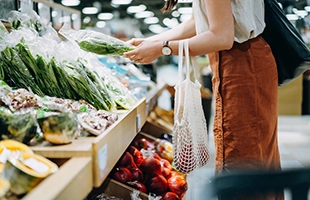
The future of food: innovation as a way forward
Innovation is critical to success in the food and beverage industry. This on-demand webinar explores innovation as a key ingredient for food and beverage companies.
Being innovative through new product development, diversifying distribution channels and marketing, and the utilization of new technologies all have become critical to a business’ success.
Innovation is the key ingredient for food companies, their brands and products to be relevant to, and continue to delight, consumers. It’s critical that you foster new opportunities to engage with consumers and they can vet products you introduce. It’s a really exciting time to be in food, given current trends and things consumers are clamoring for: sustainable
agriculture, plant-based products and an elevation of the overall food experience.
In the past few years, smaller food businesses have joined bigger players in introducing exciting innovations. The market is open and receptive to newer food entrepreneurs, and joining the business has become easier in the last five years.
The particular and unique challenge for the food industry is that consumers are constantly seeking new products, flavors and tastes. And lately, consumers are reading labels in a very different way, looking for detailed ingredient descriptions and nutritional data – and ingredients they recognize.
But they’re also looking to learn more about the companies that produce the things they eat. Food has become very social, very experiential, very much about communicating a company’s values. And that’s why we’re seeing a lot more activity in a variety of ways from producers that communicate sustainability benefits or support the planet. The continual evolution
of the food sector is driven by innovation that never stops.
It wasn’t long ago that the industry was more static, with products and company offerings remaining unchanged for longer periods of time. But social media access directly to the consumer is helping companies understand what’s working, what’s not, what consumers like and are looking for. Consumers are very vocal when they reach out to let businesses know their preferences. And that reduces the amount of time that once was required to create a product, test a product, get feedback on a product. These days, consumer feedback is delivered in real time, almost instantaneously.
Distribution channels also are changing. Decades ago, brick-and-mortar retail outlets were the dominant places people bought food products, with inventories stocked on a continual basis. Post-COVID, we now have new ghost kitchens and new ways of getting food delivered to the home. And social media (Instagram in particular) is clearly playing an outsized role here, enabling consumers to provide instantaneous feedback to food manufacturers and producers.
Smaller companies are pushing bigger players to be more thoughtful and to work faster at developing new products and introducing them to the market. These days, food entrepreneurs can go from having a new idea to placing it on a store shelf or online in a relatively short period of time. It’s an extremely competitive environment for start-ups, established corporations and food retailers. Consumers are the beneficiaries, playing a key role in creating an ecosystem of better ideas and healthier (sometimes indulgent) products that drive a better eating experience.
The information provided here is for general guidance only, and does not constitute the provision of tax advice, accounting services, investment advice, legal advice, or professional consulting of any kind. The information provided herein should not be used as a substitute for consultation with professional tax, accounting, legal or other competent advisers.
This website uses cookies.
Some of these cookies are necessary, while others help us analyse our traffic, serve advertising and deliver customised experiences for you.
For more information on the cookies we use, please refer to our Privacy Policy.
This website cannot function properly without these cookies.
Analytical cookies help us enhance our website by collecting information on its usage.
We use marketing cookies to increase the relevancy of our advertising campaigns.